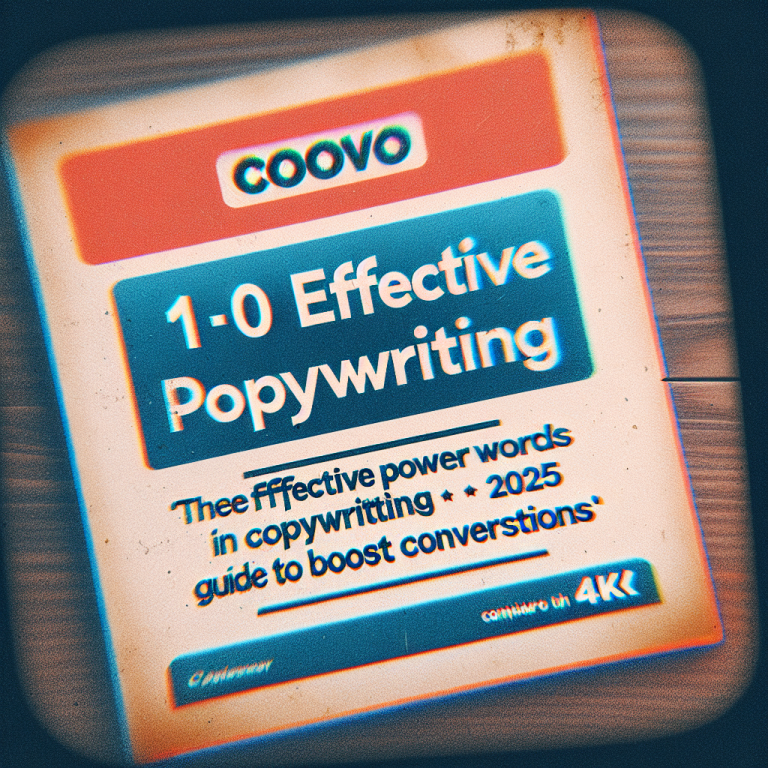10 Powerful Strategies for Blog Writing That Drives Leads in 2025
- 1. Know Your Audience Inside Out
- 2. Create Compelling Headlines That Captivate
- 3. Use SEO-Effective Keywords Strategically
- 4. Write Engaging and Valuable Content
- 5. Incorporate Visuals and Multimedia
- 6. Optimize for Readability and Scannability
- 7. Promote Your Blog Effectively
- 8. Leverage Content Updates and Repurposing
- 9. Utilize Analytics for Continual Improvement
- 10. Build Authority and Trust with Your Audience
1. Know Your Audience Inside Out
Understanding Your Target Readers
Before you start crafting blog posts that drive leads, you must truly understand who your audience is. Conduct surveys, analyze your website analytics, and engage with your followers on social media to gather insights. Knowing their pain points, interests, and search behavior allows you to tailor your content effectively. For instance, if your target audience is small business owners interested in digital marketing, your blog should address their specific challenges and solutions.
This understanding helps you craft content that resonates and encourages engagement. When your blog writing aligns with your audience’s needs, it becomes more likely to generate leads because readers see your content as valuable and relevant. Remember, the more your content speaks directly to your reader’s problems, the more effective your blog writing that drives leads becomes in 2025.
Regularly revisit your audience insights as market trends evolve. Use tools like Google Analytics, social media insights, and customer feedback to stay updated. This ongoing research ensures your blog remains focused and impactful over time.
Creating Buyer Personas
Developing detailed buyer personas helps you visualize your ideal reader. Include demographics, interests, and behavioral traits. For example, a typical persona for a SaaS product might be “Tech-savvy entrepreneurs aged 30-45” who seek innovative tools to streamline their business processes.
By aligning your blog topics and tone with these personas, you guide your writing efforts more precisely. This targeted approach makes your blog writing that drives leads more effective because you speak directly to those most likely to convert. Use scenario-based examples to tailor your content further, ensuring it addresses specific challenges your personas face.
Once your personas are clear, craft content clusters around their questions and provided solutions. This approach boosts SEO relevance and makes your content more discoverable by the right audience.
2. Create Compelling Headlines That Captivate
The Power of a Strong Headline
Your headline is the gatekeeper to your blog content. In 2025, with increased competition online, crafting headlines that grab attention is more critical than ever. An effective headline should promise value, invoke curiosity, or offer a solutionâencouraging readers to click and explore further.
For example, instead of a generic title like “Blog Tips,” opt for something more enticing: “10 Proven Strategies for Blog Writing That Drives Leads in 2025.” This headline clearly states the benefit and appeals directly to your target audience seeking lead generation tips.
Use numbers, power words, and specific keywords to enhance appeal. Data shows that headlines with numbers get 95% more clicks, making them an essential element of blog writing that drives leads.
Testing and Optimizing Headlines
Donât settle on your initial headlines. Use A/B testing to find what resonates most with your audience. Tools like Google Optimize or HubSpot can help you test different variations and analyze performance metrics.
Take note of engagement rates, click-throughs, and bounce rates to measure headline effectiveness. Constantly refining your headlines ensures your blog writing remains compelling and leads-focused in 2025.
Remember, a great headline not only attracts clicks but also sets the tone for high-quality, lead-converting content.
3. Use SEO-Effective Keywords Strategically
Researching Keywords for Maximum Impact
Effective blog writing that drives leads in 2025 is rooted in thorough keyword research. Use tools like SEMrush, Ahrefs, or Google Keyword Planner to find high-volume, low-competition keywords relevant to your niche.
Incorporate semantic variations to broaden your reach. For instance, alongside “blog writing that drives leads,” include related phrases like “lead-generating blog tips,” “convert readers into leads,” and “content marketing strategies 2025.” Doing so enriches your content and improves ranking chances.
Prioritize long-tail keywords, which tend to have less competition and higher conversion intent. Example: “How to craft blog posts that generate leads in 2025.” This specificity helps attract highly interested visitors, boosting your lead-generation efforts.
Strategic Placement for Maximum Effectiveness
Place keywords naturally throughout your content, especially in the title, headings, meta descriptions, and initial paragraphs. Avoid keyword stuffing, which can hurt SEO and readability.
Ensure your keywords support the overall narrative. For example, weave “blog writing that drives leads” into your introduction and conclusion to reinforce your main topic.
Using variations and synonyms makes your content more accessible to voice search and improves overall SEO performance, essential for maintaining relevance in 2025.
4. Write Engaging and Valuable Content
Focusing on Your Audienceâs Needs
Great blog writing that drives leads always centers on providing value. Share actionable insights, real-world examples, and practical tips that your audience can implement immediately.
For instance, include case studies demonstrating how specific strategies resulted in increased lead conversions. Use storytelling to make your content relatable and memorable.
Remember, the goal isnât just to inform but to inspire action. If your content resonates emotionally while delivering concrete value, your readers are more likely to share it and convert into leads.
Consistency and Depth
Consistent posting builds authority and trust, which are fundamental in lead generation. Aim for a regular publishing schedule that keeps your audience engaged without sacrificing quality.
Deep, comprehensive articles tend to perform better in search rankings and provide more value. Cover topics from multiple angles, including benefits, challenges, and solutions, to establish your expertise in blog writing that drives leads.
Use actionable lists, detailed tutorials, and expert quotes to make your posts thorough and trustworthy. High-value content encourages visitors to subscribe, share, and ultimately convert into leads.
5. Incorporate Visuals and Multimedia
Enhancing Engagement with Visuals
Using high-quality visuals can significantly boost your blog’s ability to attract and retain readers. Infographics, charts, and images help break up text and clarify complex ideas.
For instance, include a flowchart explaining your lead generation funnel or an infographic summarizing key blog writing tips. These visuals can be repurposed across social media channels, increasing your reach.
Ensure every visual has an alt text rich in keywords, like “visual example of blog writing that drives leads,” to support SEO efforts. Well-optimized images improve page load speed and accessibility.
Video and Interactive Content
Embedding short videos, demos, or interactive quizzes can enhance user experience and engagement. Videos demonstrating how to optimize a blog post or walk-throughs of content strategies keep visitors on your site longer.
Interactive content, such as calculators or feedback forms, can encourage user participation and data collectionâdriving leads through direct interaction. This multimedia approach makes your blog more memorable and shareable.
This strategy is especially relevant in 2025, as multimedia content outperforms text-only posts in engagement metrics.
6. Optimize for Readability and Scannability
Formatting for Easy Reading
Most online readers scan rather than read linearly. Use short paragraphs, clear headings, bullet points, and numbered lists to make your content easy to skim.
For example, a well-structured post about blog writing that drives leads might break down into sections with descriptive subheadings. Highlight key points with bold or italics to draw attention.
Utilize plenty of white space to avoid clutter, making your content inviting and accessible. A reader-friendly design encourages longer visits and more engagement, leading to higher chances of conversions.
Mobile Optimization
Ensure your blog is fully responsive. In 2025, over 70% of web traffic comes from mobile devices. If your site isnât optimized for smartphones and tablets, you risk losing leads.
Test your siteâs mobile performance regularly, adjusting font sizes, button placements, and page load speeds. Googleâs mobile-friendly test tool is a great resource for this.
A seamless mobile experience improves user satisfaction and ensures your blog writing efforts that drive leads reach the widest possible audience.
7. Promote Your Blog Effectively
Leveraging Social Media and Email
Share your blog posts across all your channelsâLinkedIn, Twitter, Facebook, and Instagramâto maximize visibility. Tailor your message and visuals for each platform to engage different audiences.
Email marketing is another powerful tool. Build a subscriber list and send regular newsletters highlighting your latest content. Personalization increases open rates and nurtures leads over time.
In 2025, integrating social proof, such as testimonials or case studies, in your promotions enhances credibility and encourages sharing, further amplifying your reach.
Partnerships and Guest Posting
Collaborate with influencers, industry experts, or complementary brands to expand your audience. Guest posting on reputable sites can boost your authority and drive qualified traffic to your blog.
Use collaborative webinars or co-authored articles to establish authority. These partnerships can open new lead channels and improve your blog writing tactics that drive leads.
Consistent promotion efforts ensure your content doesnât get lost and continues generating leads for years to come.
8. Leverage Content Updates and Repurposing
Keeping Content Fresh and Relevant
The digital landscape evolves rapidly, and outdated content can harm your credibility. Regularly update your existing blog posts with new statistics, insights, and examples.
This not only improves SEO but also demonstrates your commitment to providing current, accurate information. For example, refresh a post titled “Blog writing that drives leads in 2024” to reflect the latest trends and techniques in 2025.
Google favors fresh content, which can boost your rankings and subsequently lead to more leads through increased visibility.
Repurposing Content for Greater Reach
Transform long-form blog posts into videos, podcasts, infographics, or social media snippets. Repurposing allows you to reach different audience segments and extend the shelf life of your most valuable content.
For example, turn a detailed guide on lead-generating blog strategies into a series of short, shareable Instagram posts or LinkedIn articles. This multi-channel approach maximizes your exposure and enhances your blog writing that drives leads.
Repurposing is an efficient way to get more value from your content investments, turning existing assets into new lead opportunities.
9. Utilize Analytics for Continual Improvement
Measuring Content Performance
Data-driven decision-making is crucial in 2025. Use tools like Google Analytics, Hotjar, or Matomo to track user behavior, engagement metrics, and conversion rates.
Identify which posts are performing well and analyze whyâlook at keywords, content format, and distribution channels. Use these insights to inform your future blog writing strategies.
Continual monitoring helps you adapt quickly, tweaking your content to better align with what drives leads.
Adjusting Strategies Based on Data
Regularly review your analytics to identify gaps or opportunities. For example, if you notice high bounce rates on certain topics, consider creating more in-depth or targeted content in those areas.
Set specific, measurable goalsâlike increasing lead conversions by 20%âand track progress. Use insights to refine your SEO, content topics, and promotion tactics.
This iterative process ensures your blog writing that drives leads remains effective and continuously improves over time.
10. Build Authority and Trust with Your Audience
Consistent, High-Quality Content
Establish yourself as an industry authority by consistently delivering high-quality, accurate, and insightful content. Sharing case studies, expert interviews, and comprehensive guides positions you as a trusted resource.
Over time, this builds authority, making your readers more receptive to your calls to actionâleading to increased conversions and lead generation.
Trust is the foundation of effective blog writing that drives leads. Be transparent, honest, and helpful in every piece you publish.
Engaging with Your Audience
Respond to comments, emails, and social media messages to foster community and trust. Personal engagement demonstrates your genuine interest and builds lasting relationships.
Ask for feedback and participate in industry discussions. This active presence encourages loyalty and positions your blog as a go-to source for your niche.
As your authority grows, so does your ability to drive leads through your content.
Frequently Asked Questions
1. What is blog writing that drives leads?
Blog writing that drives leads involves creating targeted, valuable, and optimized content designed to attract, engage, and convert readers into potential customers or clients. It combines SEO, compelling storytelling, and strategic promotion.
2. How often should I update my blog to maintain lead generation?
Aim to publish new content at least once a week and regularly update existing posts with fresh information. Consistency maintains your authority and keeps your audience engaged, which is crucial for ongoing lead generation.
3. What are some SEO tips for blog writing that drives leads?
Use relevant keywords naturally, optimize your headlines, include internal and external links, and ensure mobile-friendliness. Incorporating semantic keywords and optimizing images also helps improve ranking and visibility.
4. Can multimedia enhance my blog’s ability to generate leads?
Yes, multimedia elements like images, videos, and interactive content can increase engagement, make your content more memorable, and encourage sharingâall of which boost the chances of converting visitors into leads.
5. Why is understanding my audience important for blog writing that drives leads?
Understanding your audience allows you to create specific, relevant content that resonates with their needs and pain points. This relevance increases engagement and the likelihood of converting readers into leads.
Conclusion
Mastering the art of blog writing that drives leads in 2025 requires a strategic blend of audience understanding, SEO expertise, engaging content, and persistent promotion. By implementing these 10 powerful strategies, you’ll create compelling, optimized blogs that attract your ideal audience and convert them into loyal customers. Remember, consistent effort and continual refinement are keyâyour success depends on understanding what resonates most and adapting accordingly. Embrace these tactics, and watch your blog become a leading lead-generation machine in 2025!







